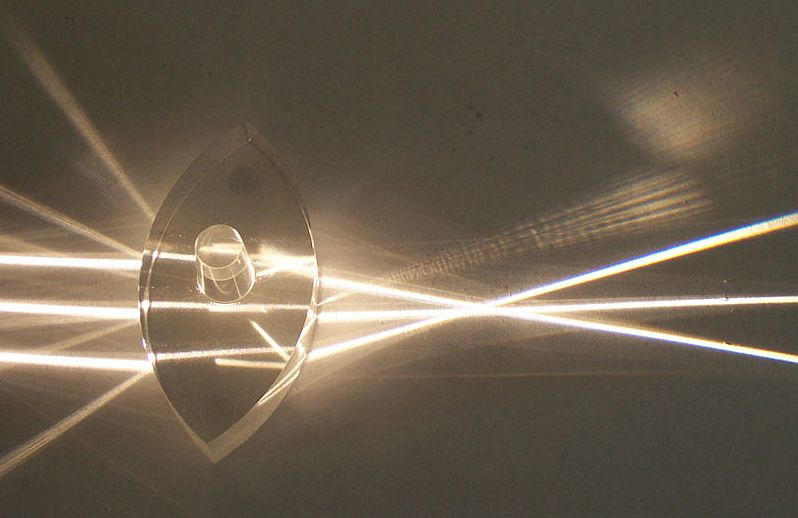Interferometry is not imaging


Imaging is a technique encountered continously - as long as our eyes are open we are subject to imaging. The eye contains a lens which focusses the visible light from the world around us onto the retina, after which the brain interprets these detections into an image.
For this introduction is is sufficient to realize that visible light is electromagnetic waves, as are radiowaves, travelling at the same, fixed speed: the speed of light (~300.000 km/s). The only property setting the two apart is their wavelength (explained below).
Waves are, well, waves. A somewhat scientifically acceptable definition of a wave is:
A signal whose time-dependent amplitude is a series of peaks and troughs at regular intervals.
The wavelength is defined as the distance (in meters) between successive peaks.
Most of the time the term 'wavefront' is used. The wavefront is the line connecting the peak-value of a wave at a particular time. It shows where, at that moment in time, a wave has the same, maximum, amplitude. It can be used to illustrate how a wave, or series of waves, propagate(s) in time.
The picture to the right/above shows an animated picture of wavefronts moving from a source (not shown) at the top to the bottom. They are being focussed by a lens.
The points where the wavefronts meet at the bottom of the image is the focus. If a detector is placed there (e.g. a retina, or a CCD from a photocamera) an image of the source that emitted the radiation is detected or recorded.
The image below shows a lens in live action rather than via a schematic drawing:

Light from the source travels from left to right where it hits the first curved surface of the lens.
At this surface, part of the light is reflected back to the left and the remaining part is refracted (see Snell's law) into the interior part of the lens.
Then it hits the second curved surface of the lens where again part of the light is reflected and the remainder is refracted.
Finally, the refracted rays of light meet at the focal point of the lens.
In interferometry images are not directly detected or recorded. In order to start to understand the difference a slight detour into the very nature of light has to be made: the fact that it is waves has implications for how objects are imaged onto a detector and ultimately why interferometry actually works.